実施日 : 2006年05月16日(火)
Visit to Japan Atomic Energy Agency, Tokai village Ibaraki Pref.
投稿日 : 2013年08月22日
"J-PARC", for the world's highest level of neutron experiment, and "CLEAR" / "CTBT-NDC", the nuclear nonproliferation laboratories
Ibaraki prefecture, to the north-east of Tokyo, has many of Japan's atomic facilities, Tokai village is the birthplace of Japanese Atomic Energy, and also has the Tokai Research and Development Center. Now a huge facility named "J-PARC" (Japan Proton Accelerator Research Complex) is under construction and is expected to start its operation in 2008. In this facility, protons will be accelerated to almost the speed of light (seven and a half times round of the earth per second) and collide against the atomic nuclei of a target of mercury. The nuclei are destroyed, artificially producing neutrons and mesons. The function of proteins can be clarified by these neutrons, and the technology will help the development of new medicines for diseases that at present incurable, and of high density magnetic memory. J-PARC now boasts its international competitive power in this field, and it plans to become a world-wide research center by opening its door to foreign researchers.
Meanwhile, the Nuclear Nonproliferation Science & Technology Center was established in October 2005, also in the Tokai Research and Development Center, with the aim of contributing to nuclear material management and the international framework of nuclear nonproliferation. Amid the growing fear of nuclear development in North Korea and Iran, and global concern for nuclear nonproliferation, "CLEAR" (Clean Laboratory for Environmental Analysis and Research) and "CTBT-NDC" (Comprehensive Nuclear Test Ban Treaty – National Data Center) play an important role as a "watchdog for nuclear nonproliferation" by detecting and analyzing the secret development of nuclear weapons and clandestine nuclear tests.
In this press tour, you will visit the Tokai Research and Development Center of the Japan Atomic Energy Agency and see the building of the J-PARC site and nuclear nonproliferation facilities. You will also have briefings about the industrial application of neutron science which is being pursued by Ibaraki prefecture, and understand the future possibilities of atomic research in its application for industry.
IMPORTANT
***Please note that the deadline for application is Tuesday, May 1st.
***Please specify the ID number of your Gaimusho foreign press registration card and participants' nationality in the "others" section of the application form. (needed because you will be visiting nuclear sites in this tour) If you are a Japanese, please specify your business affiliation and title only.
***Because of office renovations, FPC cannot receive any telephone calls, fax or e-mails from the evening of May 2nd to the evening of May 7th.
Presentations
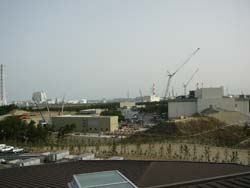 J-PARC (Japan Proton Accelerator Research Complex)
J-PARC (Japan Proton Accelerator Research Complex)
>> Link
There are two types of facilities for research into materials and life science using neutrons. One utilizes nuclear fission in a nuclear reactor, for example, the JRR-3 reactor in the Tokai Research and Development Center of Japan Atomic Energy Agency in Japan, and others in the United States, France and Germany. The other, called "pulse", produces neutrons and mesons by bombarding a target with an accelerated proton beam. J-PARC is expected to be one of the biggest and most cutting-edge facility, although the United States, the United Kingdom, and other nations also have this kind of facility. To accelerate protons by electromagnetic force, J-PARC uses three stages: a 330m linear accelerator and two synchrotrons, one 350m and the other 1.6km in perimeter. This 3.6km-long track in total will end up 15m underground, but now, before the operation, you can visit the construction site including the accelerators and the 23 beam lines that will become the neutron-applied research facility.

Ibaraki Prefecture
>> Link
Located to the north-east of Tokyo and with a population of about three million, Ibaraki Prefecture boasts a variety of industrial complexes such as "Tsukuba – city of academy and science technology", "Hitachi – city of machinery production" and "Kashima – city of basic materials industry". Thanks to the recent infrastructure building to improve the access to/from Tokyo, Ibaraki welcomes enterprises from outside. Now Ibaraki proposes a policy for industrial development, named "Science Frontier 21", under a new concept "Tokai – city of atomic industry". Therefore, Ibaraki has placed emphasis on research and development at J-PARC, and has decided to reserve two of the 23 beam lines to be opened to companies for their future business. "Material Science Research" and "Life Science Research" 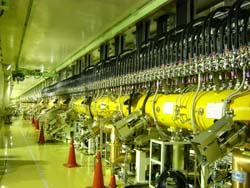 will be held in these beam lines, the former to be applied to developing high-density magnetic memory or nondestructive testing to research material strength, the latter for new medicines for incurable diseases or for agriculture by revealing details of protein structure.
will be held in these beam lines, the former to be applied to developing high-density magnetic memory or nondestructive testing to research material strength, the latter for new medicines for incurable diseases or for agriculture by revealing details of protein structure.
CLEAR (Clean Laboratory for Environmental Analysis and Research)
>> Link
Environmental sample analysis is a technology to support the safeguard control of IAEA (International Atomic Energy Agency), which reveals the secret development of nuclear weap
ons by analyzing the isotopic composition of uranium and plutonium in environmental samples collected during inspections of nuclear facilities. Since 2004, CLEAR has played an important role in detecting hidden nuclear development for military purposes by mass analysis of very small amounts of uranium and plutonium on requests from the IAEA. CLEAR has clean rooms of a cleanness almost equal to a semiconductor laboratory, with an amount of dust that is 0.0001% of the outside. From the viewpoint of high-level apparatus and research activities, CLEAR is one of the best laboratories for trace analysis and is superior to SAL (Safeguards Analytical Laboratory) of the IAEA, which is located at the suburb of Vienna.
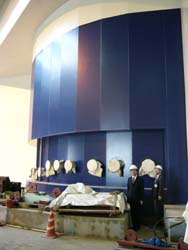
CTBT – NDC (National Data Center)
For the immediate ratification of the CTBT (Comprehensive Nuclear-Test-Ban Treaty), a world-wide sensitive monitoring system is under the construction. There are 80 radionuclide monitoring stations which cover the whole world and can detect specific radionuclide particulates released from nuclear test explosions. The data from these monitoring stations are sent to the National Data Center in Tokai every day via the International Data Center in Vienna. The NDC is networked in an international verification regime under the CTBT, and can act as a nuclear development watchdog by tracing the exact time and place of a nuclear test that happens anywhere in the world.
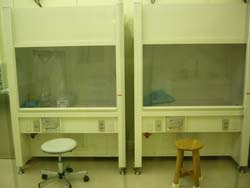
Tour itinerary and application details
1. Itinerary :
Tuesday, May 16th
7:30 Leave Ueno station by express train "Fresh Hitachi #5"
9:03 Arrive at Tokai station
9:10 Get on the chartered bus
9:20 Arrive at Tokai Research and Development Center of Japan Atomic Energy Agency
9:25-9:40 Welcome speech and short briefing about JAEA
9:40-10:35 Briefing about J-PARC and application of neutron research
10:40-11:55 Observation of J-PARC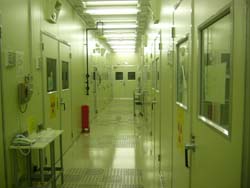 12:00-12:40 Lunch
12:00-12:40 Lunch
12:45-13:45 Briefing about the vision of neutron industry, Ibaraki prefecture
13:55-14:10 Briefing about the international trend of nonproliferation and Japan's present situation
14:10-15:20 Briefing and observation of CLEAR
15:20-15:50 Briefing and demonstration of CTBT-NDC
16:00 Leave Tokai Research and Development Center by chartered bus
16:36 Leave Tokai station by express train "Fresh Hitachi #48"
18:08 Arrive at Ueno station, disperse
2. Qualification: Bearer of Gaimusho foreign press registration card
3. Expenses: 8,000 per person including transportation and lunch
* FPC will later inform the participants of methods for payment, cancellation fee etc.
4. Participants: Limited to the first 15 applicants on a first-come first-served basis. (Only one reporter and one photographer from each company, but two participants from each TV team will be acceptable.)
5. Application: You can also find information on this press tour on the Press tour information of the Media Assistance Page of the FPC’s website:>> Link
Please apply online from that page. You need the following username and password to enter the application page.
Username: fpcj Password: members
6. FPC Contact: Ms. Yamashiro and Mr. Yano (Tel: 03-3501-3401)
7. Remarks:
(1) There are some restrictions on photographing and filming at the tour sites. Please follow the instructions of the officials on duty.
(2) FPC will not be liable for any inconvenience, trouble or accident that might occur in the course of the tour.


